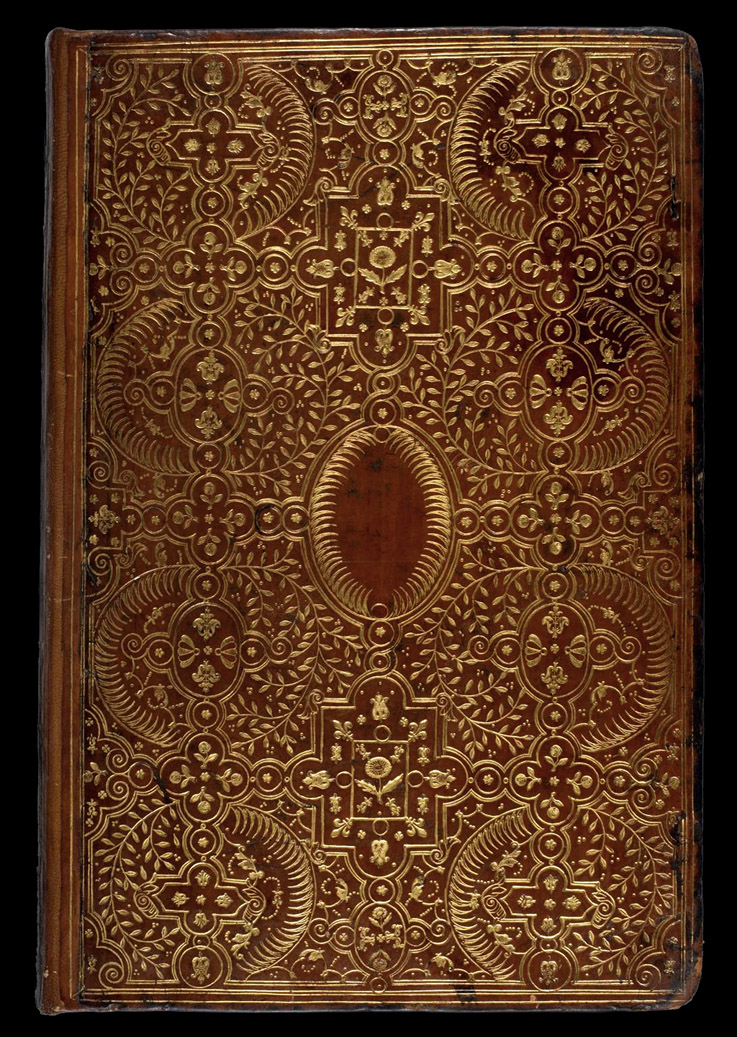

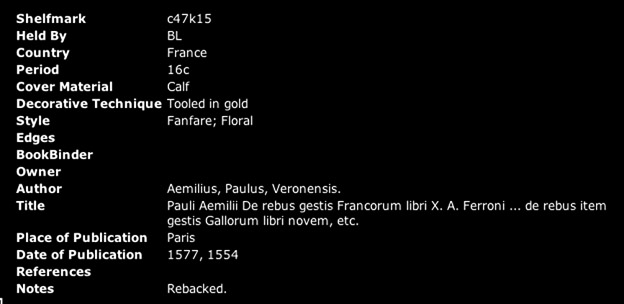
| The fanfare binding shown above is found in the online Database of Bookbindings at the British Library, I came across it during my first initial search of the database for Fanfare bindings. and due to the scroll motif listed by Hobson as fig.36, had already searched the binding for tools before I discovered it was in Hobson's list of fanfare bindings as No. 103. The reference for the reproduction of this binding is Fletcher, Bookbinding in France, Fig.10, and the Premier Possesseur is listed as inconnu (unknown), which is an obvious error by Hobson, because Fletcher clearly states that this binding was made for Marguerite de Valois. I have, somewhere, this 1895 book by William Younger Fletcher but it can also be found online at archive.org I downloaded a copy and reproduce below Fig. 10 as well as the relevant text concerning this binding which Fletcher suggests was probably made by Clovis Eve. How Hobson could have missed this most important detail concerning Marguerite de Valois, remains a mystery that has been perpetuated by the British Library who also fail to mention Marguerite or Clovis. I have included below a short history on Marguerite. There are two important questions here; when was this binding bound, and by whom? The style of the binding and tools used, suggests that it could be a later binding in which case made by Clovis Eve. Who could doubt that the Queen of France would employ anyone but the best for this work, or that, if it was made as a gift for her that it would have to have been from the Eve's bindery. |
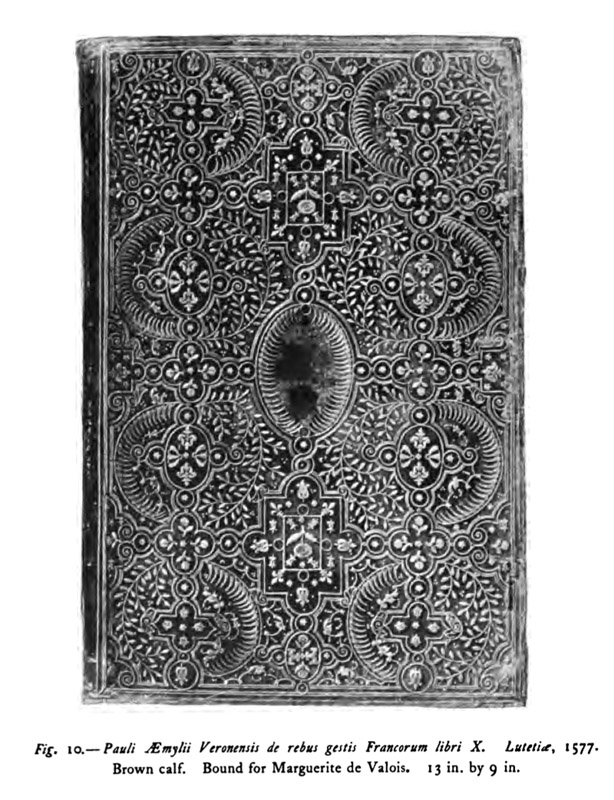
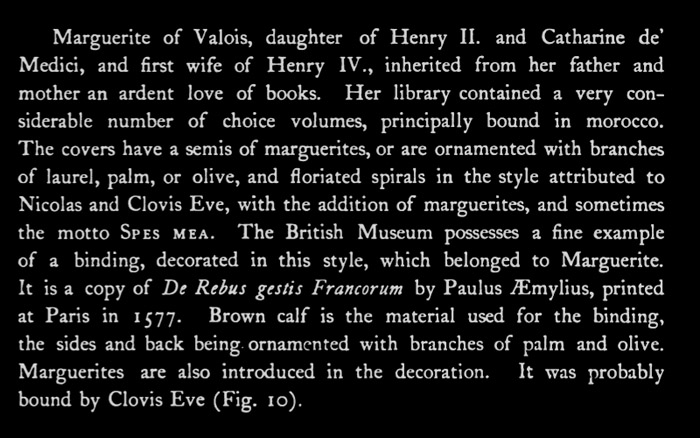
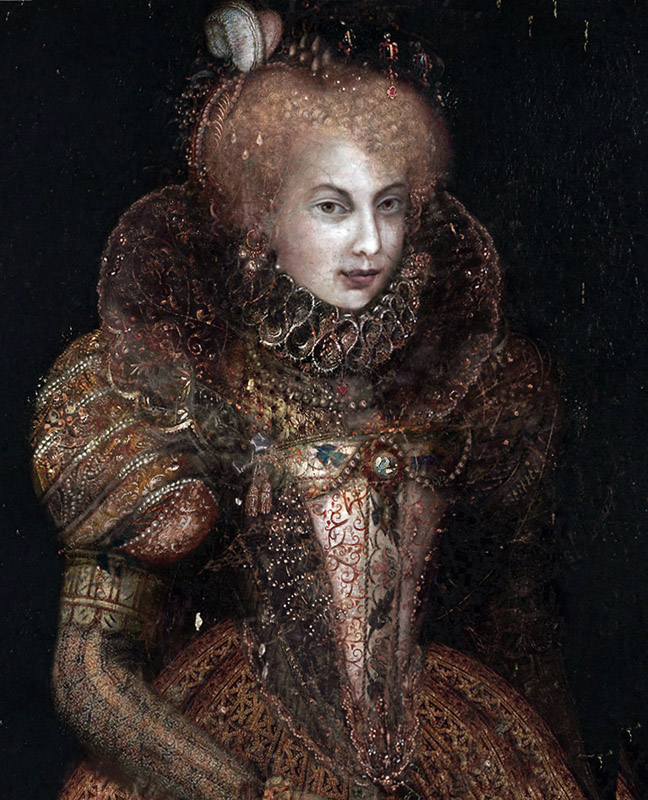
|
Margaret of Valois From Wikipedia, the free encyclopedia Margaret of France Margaret of France (French: Marguerite, 14 May 1553 27 March 1615) was Queen of France and of Navarre during the late sixteenth century. A royal princess of France by birth, she was the last of the House of Valois. She was the daughter of King Henry II of France and Catherine de' Medici and the sister of Kings Francis II, Charles IX and Henry III and of Queen Elizabeth of Spain. She was queen twice for she had married King Henry III of Navarre who finally became King Henry IV of France. Margaret, among other political manipulations, was subjected to an arranged marriage and being held prisoner (albeit at a castle) for many years. However, her life was anything but passive. Aside from being twice a queen‹first of Navarre (1572), then of France (1589), Margaret was famous for her beauty and sense of style (she was one of the most fashionable women of her time, influencing most of Europe's Royal Courts with her clothing). She was also a gifted poet and writer, notable for both her own scandalous behavior and for revealing that of others. Margaret took many lovers both during her marriage and after her annulment. The most well-known were Joseph Boniface de La Môle, Jacques de Harlay, Seigneur de Champvallon and Louis de Bussy d'Amboise. When imprisoned by her brother Henry III for eighteen years, she took advantage of the time to write her memoirs, which included a succession of stories relating to the disputes of her brothers Charles IX and Henry III with her husband Henry IV. The memoirs were published posthumously in 1628. Her life has inspired a variety of stories over the centuries, beginning with Shakespeare's early comedy Love's Labour's Lost written during her lifetime, to Alexandre Dumas, père's 1845 novel La Reine Margot; to a 1994 movie La Reine Margot. |
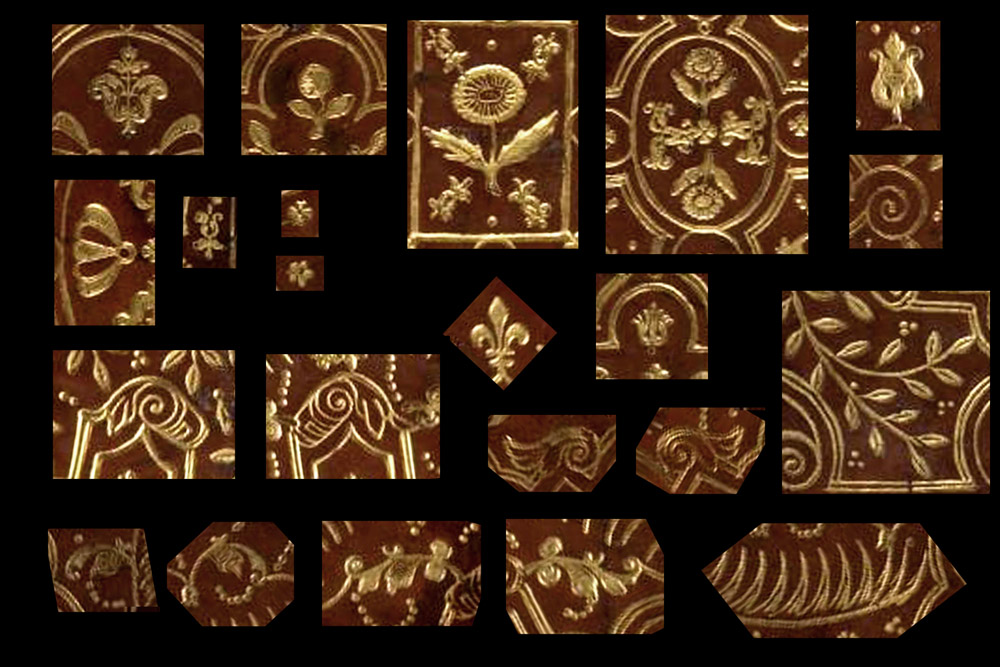
| Suddenly it is very important to look closely at these imprints, as I was searching through Hobson's imprint models, I noticed that our marguerite fleuron looked closest to fig. 49f, it is only after discovering the reference at the bottom of the page, that we learn that the very bindings we are now investigating, a small part of the hundreds that Hobson has meticulously catalogued, are in fact from the Royal bindery. Below I have included Hobson's short resume on this. These bindings can be linked to the famous "statuts" bindings which I will detail briefly on another page. Fletcher will be pleased to know that he guessed right! On the next page we will look at the next binding that I managed to find on my own and is on Hobson's list as No. 127. |
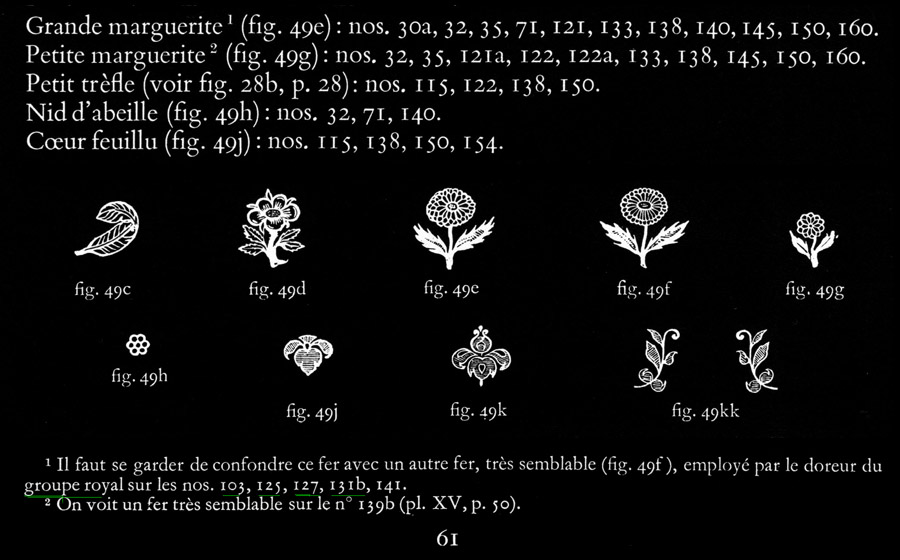

| click on this link to see the next page: Hobson fanfare binding No. 127. |
| information about the author | return to the home page of VIRTUAL BOOKBINDING |